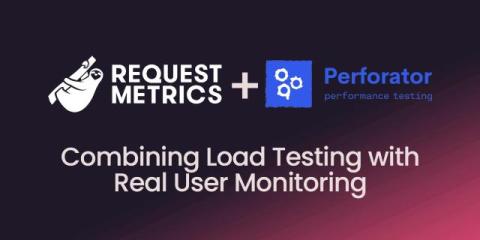Request Metrics and Perforator - Combining RUM and Load Testing
Your website’s performance can make or break your business. Slow load times, crashes under pressure, and a poor user experience can cost you customers, reduce your search engine rankings, and hurt your bottom line. That’s why monitoring and testing your site’s performance is critical—but not all performance monitoring is the same. At Request Metrics, we focus on Real User Monitoring (RUM), which shows you how real users are experiencing your website in real-time.











